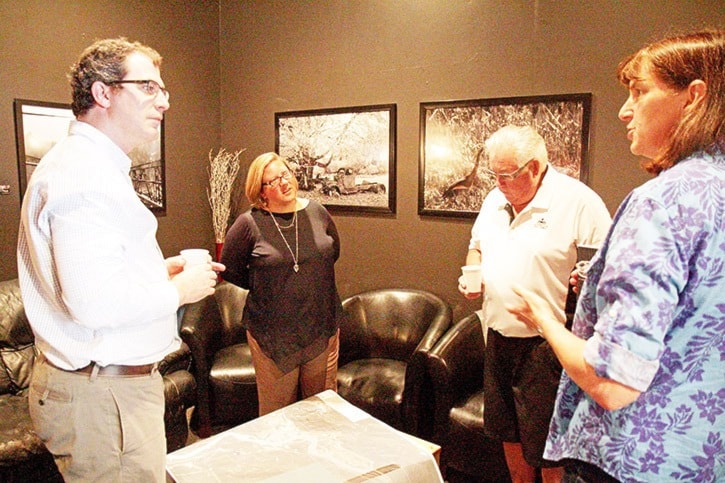Proponents, opponents and undecideds showed up at Kinder Morgan Canada’s Trans Mountain community outreach session last Thursday morning.
Held at the Blue Moose Coffee House, staff from the Burnaby-based company came to sell the project to Hope residents, promising economic benefits in terms of increased tax dollars for the District, construction and labour spending, and a one-time grant.
According to its community roundup circular, Hope stands to gain an increase of $594,000 in tax revenues as a result of the expansion, and the Fraser Valley would see an injection of $626 million in construction spending and $58.6 million in engaging “local and non-local workers during construction.”
They add that a community benefit agreement will provide the District of Hope with $500,000 “for improvements to community spaces.” The donation is subject to approval of the pipeline.
However, opponents to the pipelines dwarfed the number of proponents at the coffee session.
“I don’t buy into the answers that were given about what will happen in case of an earthquake,” said Hope resident Sharlene Harrison-Hinds.
Trans Mountain staff said that the pipeline will sit within an area which has no active faults, meaning it has not seen seismic activity for approximately 11,000 years, and that the pipeline will conform to Canadian building standards, including CSA Group’s Z662 standards.
“When everything collapses — substrate and the mountains crumble — what are they trying to explain to me? That it’s like a piece of spaghetti?” said Harrison-Hinds. “Money talks and everybody else’s ethics walks.
“But as I am fond of saying: there are no jobs on a dead planet. If we had one small spill in the Fraser, the environmental repercussions are beyond our understanding.”
Chawathil First Nation historian-researcher Patricia John, who is also an elder, attended.
She believes the 135 First Nations along the pipeline’s route from Edmonton to the Burnaby-Westridge terminals feel a “unanimous concern.”
“You can’t tell me to go elsewhere. Go elsewhere and get your medicine. Go elsewhere and do your hunting. And the spirituality of the watersheds. The water is vital to our practices,” said John.
Locally, John said that while the pipeline would not run through their territory, at least 25 kilometres of it runs through their traditional fishing territory.
John said other First Nations have brought their concerns to the First Nations Emergency Services Society board that they needed first responders and immediate information of events on the pipeline.
“Because you look at their statistics — how long it’s going to take to respond — it’s down at some station far away,” said John.
Asked whether the financial contributions would change her mind, John responded negatively. This represents a trade-off between environment and economics that does not serve Canada’s interest, she said.
“You can’t put a price on that,” said John. “And this is what this process is making First Peoples feel like.”
However, retiree Bob French took a different stance on this issue. He stands in favour of a pipeline because he would rather have a pipeline than railcars shipping fossil fuels.
“It’s safer,” said French. “The tanker traffic on the rail — now that’s what scares me. The numbers have gone down a little right now because of the price of oil but the tankers that are going by on the rail are a disaster waiting to happen because of the number of derailments, slides and everything.
“All the stuff that goes into the canyon, goes into the river, goes into every other place and saturates into the ground. So it’s better to have it coming through a pipeline.”
The pipeline expansion recently received the thumbs up from the National Energy Board, but is three-and-a-half years away from completion, if it receives the approval from the federal government.
The feds are currently undertaking their own engagement process and will make a decision in December.
Kinder Morgan expects construction to begin next year if approved.
